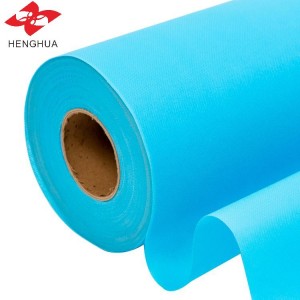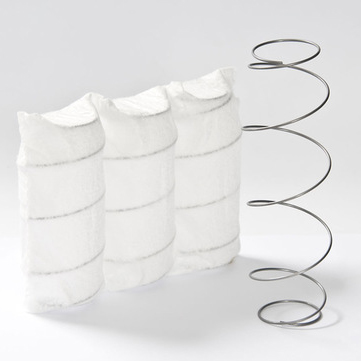
Introduction to various common properties of PP non-woven fabric
(1) Physical properties: PP non-woven fabric is a non-toxic, tasteless milky white high crystalline polymer, which is one of the lighter varieties of all plastics at present. It is particularly stable to water, and its water absorption rate in water is only 0.01% after 14h. The molecular weight is about 80,000~150,000, with good formability. However, due to the large shrinkage, the original wall products are easy to sag, and the surface of the products is shiny and easy to color.
(2) Mechanical properties: PP non-woven fabric has high crystallinity and regular structure, so it has excellent mechanical properties. Its strength, hardness and elasticity are higher than that of high-density PE (HDPE). The outstanding feature is bending fatigue resistance (7 × 10 ^ 7) The secondary opening and closing are bent without damage, and the dry friction coefficient is similar to nylon, but it is inferior to nylon under oil lubrication.
(3) Thermal performance: PP non-woven fabric has good heat resistance, melting point is 164~170 ℃, and products can be sterilized at a temperature above 100 ℃. Under the action of no external force, it will not deform at 150 ℃. The embrittlement temperature is – 35 ℃, which will occur below – 35 ℃, and the heat resistance is not as good as PE.
(4) Chemical stability: PP non-woven fabric has good chemical stability. In addition to being eroded by acid, it is relatively stable to other chemical reagents. However, low molecular weight aliphatic hydrocarbons, aromatic hydrocarbons, etc. can soften and swell PP non-woven fabric, and the chemical stability is also improved with the increase of crystallinity. Therefore, PP non-woven fabric is suitable for making Russian and Chinese chemical pipes and accessories, with good anti-corrosion effect.
(5) Electrical performance: The high frequency insulation performance of non-woven fabric is excellent. Because it almost does not absorb water, the insulation performance is not affected by humidity. It has a high dielectric coefficient. With the increase of temperature, it can be used to make heated electrical insulation products. The breakdown voltage is also very high, and it is suitable for electrical accessories. Good voltage resistance and arc resistance, but high static electricity, easy to aging when contacting with copper.
(6) Weathering resistance: non-woven fabrics are very sensitive to ultraviolet light, and the aging resistance can be improved by adding zinc oxide thiopropionic acid lauryl ester, carbon black like milky white filler, etc.
By Jacky Chen
Post time: Dec-06-2022








